Nov 11, 2021
An In-Depth Look at Marketing on TikTok
TikTok has been named as the fastest growing social media platform of all time, making the shortlist as one of the most downloaded apps globally for the past three years.
How Popular is TikTok?
The short-form video app saw rapid growth during the COVID-19 pandemic, as many users found time to explore the platform and connect with their online audiences in new ways. In Q1 2020, the rapid rise of TikTok set the record for the most downloads in a single quarter for a social app, at 315 million installs.
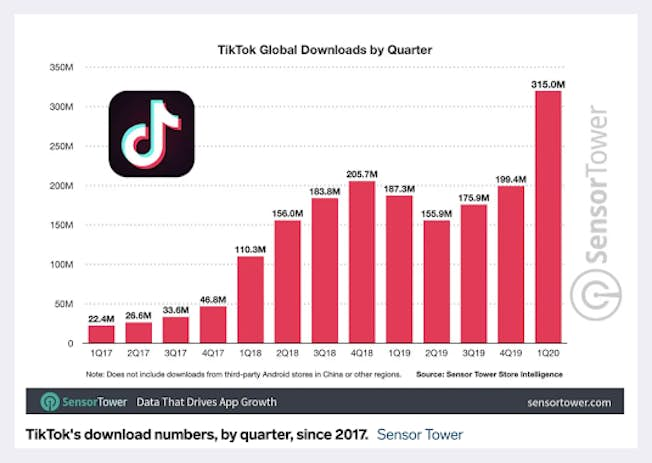
TikTok has one billion active users worldwide. That makes TikTok 7th in terms of social network sites (excluding the Chinese version Douyin at 600 million users), ahead of LinkedIn, Twitter, Pinterest, and Snapchat.
Putting this into perspective: it took Instagram six years from its launch to gain the same number of monthly active users that TikTok managed to achieve in under three years. And for Facebook to hit the same monthly active users mark, it took the best part of four years.
Marketers are drawn to TikTok as it reflects a key social media trend for creative skills and collaboration amongst young audiences. Its fast-paced nature keeps users engaged for relatively long periods, with users spending an average of 52 minutes per day on the app.
90 percent of all TikTok users access the app on a daily basis. Not only that, they are extremely active on the app. A study observing the behavior of TikTok users in the span of one month shows that 68 percent of TikTok users watch someone else’s video and 55 percent upload their own videos (Globalwebindex, 2019).
Who Owns TikTok?
TikTok began as an app called Musical.ly in 2014, a platform on which users created and shared short lip-sync videos. In 2016, Chinese tech company Bytedance launched a version of Musical.ly known as Douyin to the Chinese market before introducing it overseas as TikTok in 2017. Understanding the platform's potential, particularly to connect with young audiences that are digital natives, Bytedance bought and incorporated Musical.ly and it became the version of TikTok we know today. Bytedance still operates Douyin separately in the Chinese market.
What is TikTok Known for?
TikTok calls itself the “destination for short-form mobile videos.”
Users can create and upload a video incorporating music with filters and editing effects, or showing the user lip-synching or dancing to a song. Videos are often short, at about 15 seconds long though TikTok has been increasing the duration available - allowing 10 minutes as of March 2022.
Its rapid video format is not just for dance challenges and lip-synching, although that is what it has become famous for. TikTok creators are using the platform to discuss complex subjects, campaign for change, and educate their audiences in subjects ranging from healthcare to accountancy. If you’re looking for inspiration or to grow your TikTok fanbase, check out our blog for some great social media video ideas.
For example, Taylor Price offers Generation Z finance advice to over 1.1 million followers.
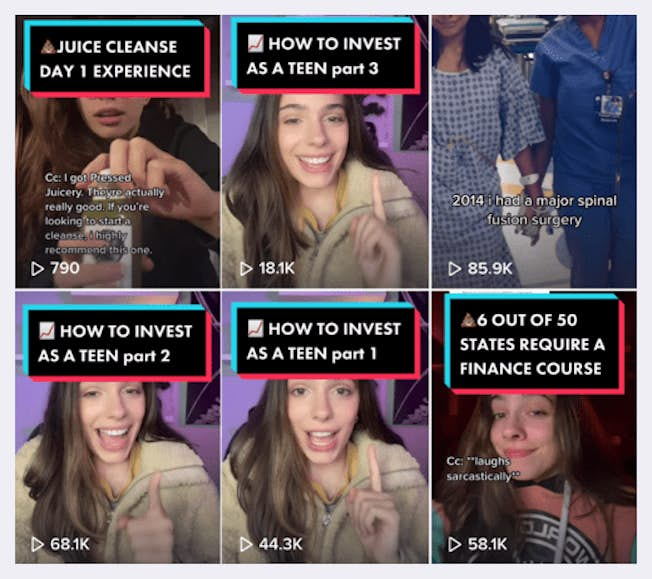
Who uses TikTok?
TikTok is most popular with teenagers around the world, who are generally early adopters of new social media platforms. They figured out early on how to use and adapt the platform to their tastes and needs, and many have gathered thousands of followers over the past few years.
Millennials and Baby Boomers who join the platform may poke fun at themselves, in their clumsiness at using the app, or the content they produce. Many claim that they have been encouraged or inspired to use the app by teenaged family members.
For example, celebrity chef Gordon Ramsey has attracted over 28.9M fans on TikTok (as of November 2021) after being taught how to use the platform for dance challenges with his Gen-Z-aged daughter, Tilly.
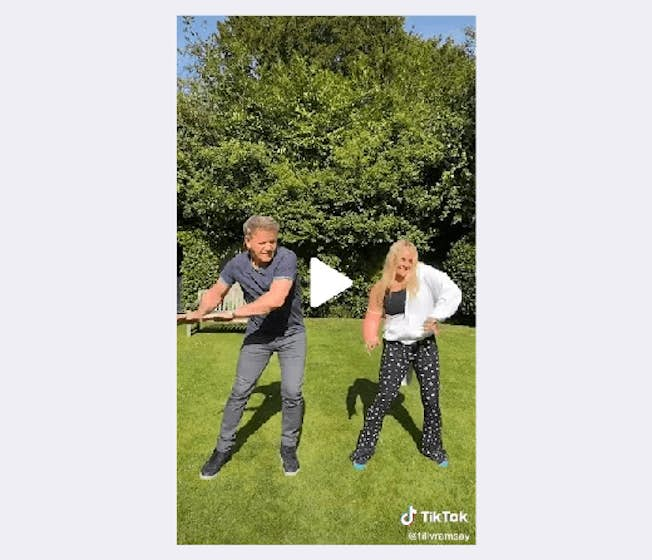
Even though TikTok very much appeals to young generations, it does seem to be retaining its audience as they age.
TikTok is available in 154 countries. Global Web Index stats from 2019 show that TikTok penetration is seemingly at its highest in Asia, where over one third of users aged 16-64 had an account. There’s not much to split the rest of the world, with penetration of between 12 percent (North America) and 10 percent (Latin America and Europe).
Global brands have recognized the importance of TikTok as a key way to engage with young audiences, encourage user-generated content, and partner with relevant influencers. TikTok has seen both paid and influencer campaigns on its app from Nike, Skittles, Fenty Beauty, Pepsi, Calvin Klein, Sony, and FIFA, to name a few. If you’re a brand looking to connect with TikTok creators, use a tracker tool to identify relevant influencers.
TikTok has seen a huge increase in celebrity users, particularly during 2020 when many Hollywood stars and global musicians were looking for ways to stay relevant and connected to fans during the COVID pandemic: these have included Reese Witherspoon, Snoop Dogg, Dua Lipa, and Kendall Jenner.
Bear in mind that TikTok is different to other video platforms such as Instagram in that it values genuine content from its creators. Artist, Doja Cat is one personality on TikTok to amass 14.7 million followers by posting content that shows off her personality and comes across as genuine. TikTik users value real content that they can relate to and believe people because they are like themselves.
Who are TikTokers?
It’s the native TikTokers who are the real stars - names that are less known in the wider media world but familiar to most 14-year-olds. Many of these influential stars have flocked to TikTok from other social media channels such as YouTube and Instagram, but have generated a large following after quickly getting to grips with the unique platform style of TikTok.
For example FitWaffle, a food influencer that started on Instagram, has generated over 2.5 million followers and over 75 million likes (as of November 2021) on TikTok since launching in 2019. Its creator, Eloise Head, is one of the world’s most popular and fastest growing foodie content creators.
There is also a huge community of creative influencers using TikTok to reach new global audiences, engage with like-minded communities, and work with brands to promote their products and services earning a healthy living from the platform. The array of beauty, fashion, food, dance and fitness influencers on TikTok offers brands the opportunity to reach younger audiences without having a presence on the app themselves. These influencers are well-versed in TikTok’s functionality and can create reactive content that jumps on the most recent trends.
The app has fueled the rise in “content houses” or “collab houses” where groups of young social media influencers are housed together in mansions to create an impressive backdrop for their branded viral content. The high rental fees are covered by talent agents or managers who broker deals and contracts with brands. Rihanna’s beauty brand Fenty Beauty invested in a content house in 2020, with a group of five creators chosen by Rihanna. Unfortunately it had to end early, due to COVID, but content creators continued to promote the brand remotely.
In December 2019, 16-year-old TikTok influencer, Charli D’Amelio, lived in an LA mansion known as Hype House where she was able to amass a following of over 100 million. She regularly collaborates with brands that reflect her personal interests and values, such as releasing products with beauty brand Morphe or promoting anti-bullying messages with UNICEF. She is now the most-followed account on TikTok, followed by Khaby Lame and Addison Rae, a fact that demonstrates the close overlap between TikTok and Instagram influencers.

What is TikTok used for?
TikTok has cemented itself as a key destination to go to for content that entertains, as shown by its two most-used hashtags - #entertainment and #dance.
Other hugely popular categories on the app include pranks, fitness, home renovation, DIY, beauty and skincare, fashion, recipes and cooking, life hacks, advice, and pets.
TikTok is seeing an ever broader range of topics being discussed and covered on its platform including more personal and serious topics such as the following:
- Healthcare advice. Fertility doctor Lora Shahine and psychologist and physician Dr David Puder have both attracted hundreds of thousands of followers
- At-home hobbies such as gardening and cooking have seen a rise in popularity on the platform, an example being Garden Marcus in Texas, who has over 650k followers.
- Sharing information around crimes as in the case of murder victim Gabbie Petito whose car was found due to footage by TikTokers, or the Kentucky girl rescued from an abductor thanks to a distress hand signal she had learned via TikTok.
- Like any social platforms, there can also be negative activity such as the #couchboy hashtag trend that was used to speculate on a girlfriend surprising her boyfriend in college and his muted reaction.
Content that offers users inspiration, but also authenticity (a growing trend across social media for brands), tends to perform well. Many TikTok users prefer to see raw and truthful angles, unlike on Instagram where the style of most videos and images has evolved to be more perfectly polished, and, some might say, less authentic.
TikTok has launched its own campaign #LearnonTikTok, which categorizes educational content around all kinds of topics, “from life hacks to science tutorials, makeup masterclasses and motivational tips, to quick cooks”.
That hashtag has had over 198 billion views (December 2021) and contains content from the BBC, Cambridge University, and Cosmopolitan Magazine.
How does TikTok work?
TikTok users can discover videos through the use of hashtags and the specific algorithm. When logged into the app, each user views an individually-curated home feed called the For You page. This is the best place to go to discover new content and users to follow.
TikTok places content here which it deems interesting for each individual user, based on signals picked up by its algorithm. The algorithm works on factors such as:
- Your individual settings; country, language, device
- Video information: hashtags, captions, sounds, genre
- User interactions; the types of video you interact with, accounts you follow, who you engage with
Content has a good chance of going viral within TikTok, as the platform selects content it deems both interesting and highly engaging for each unique user, and places that content within the For You page. This is why challenges, pranks, and dance routines spread like wildfire within the app, as it's fairly easy to gain visibility if you are using a popular hashtag or a trending sound. If you need some guidance, have a look at some of the key attributes of viral videos.
How can marketers use TikTok?
TikTok offers a brilliant opportunity for marketers to reach younger audiences around the globe, in a highly creative and playful environment. Many social media memes begin on TikTok, and brands can boost their credibility by being at the forefront of these cutting-edge trends. TikTok does not require huge budgets for video content creation either, as spontaneous content produced in ordinary surroundings has just as much as a chance of cutting through. Many TikTok videos have been filmed in bedrooms, car parks or gardens.
TikTok provides marketers with a level playing field when it comes to reach and engagement. Unlike social media platforms such as Instagram or YouTube, TikTok accounts with zero followers can get millions of views on a new video thanks to the viral nature of the algorithm. As long as the content appeals to the audience, the engagement will follow.
TikTok experiences higher engagement rates from the app’s followers than other social media platforms (Influencer Marketing Hub, 2019) - so marketers can achieve significant buzz with a carefully-planned campaign using content that appeals to the app’s audience.
There are four key ways that marketers can begin using TikTok:
1. Start a branded channel
Create a branded page and begin experimenting with content types. Content can be created relatively quickly and with no budget. The best thing to do is follow trending hashtags and get involved with the latest memes, and apply them to your brand. Utilize the app’s built-in filters, effects, soundbites, and editing tools to create and share authentic content. The organic reach on TikTok is huge, but impactful engagement is only derived if your content truly resonates with your audience and plays to the rules of the platform. Posting your corporate brand messaging here simply won’t work.
2. Collaborate with influencers
A smart way to utilize TikTok is to leverage influencer communities - the stats on influencers leaves no doubt as to how powerful they can be. Influencers who live and breathe TikTok have established highly engaged followings through posting high-quality content which resonates. They understand TikTok and know how to use its tools, features, and trends to their advantage. Brands can approach and collaborate on campaigns which use these influencers’ skills and knowledge. TikTok has its own Creator Marketplace, designed to link up brands and creators.
3. Start a hashtag challenge
Creating a challenge for users to enter provides a great way for brands to start a cultural trend or meme. Top-performing challenges attract millions of users to create videos for the campaign. A great example is the E.l.f cosmetics #eyeslipsface campaign which saw over 4 billion views and 5 million video contributions, and has been stated as the most successful TikTok marketing campaign by AdWeek.
4. Run TikTok advertising
TikTok is one of the most exciting new advertising channels because it has the scale of other platforms such as Instagram, but it’s not yet saturated with advertisers. This means it can be more affordable to generate impressions and clicks.
Marketers can run in-feed adverts, sponsored hashtag challenges, and banner ads within the homepage of the app. As well as targeting age, location, and demographics, advertisers can target people who have viewed similar content to theirs. Advertisers can sign up to TikTok for Business to run self-serve advertising campaigns.
Another social app to keep in mind when trying to connect with a young audience is WhatsApp. The instant messaging app is growing in popularity across the globe and provides great marketing opportunities once it is integrated with Facebook and Instagram.
Who is using TikTok well?
Many marketers are beginning to explore the power of TikTok by running influencer marketing campaigns on the platform. There are countless examples of the fashion industry and beauty brands enlisting the help of influencers to promote and review products, as well as getting involved with particular challenges that have been set by the brands.
1. Chipotle
One brand which has received regular praise for its understanding of TikTok as a platform is the fast casual restaurant brand Chipotle. In 2019, Chipotle’s GuacDance Challenge, which urged guacamole fans to show off dance moves dedicated to avocados, received 250,000 video submissions and 430 million video starts during a six-day run. It resulted in the brand’s largest amount of guacamole ordered on National Avocado Day.
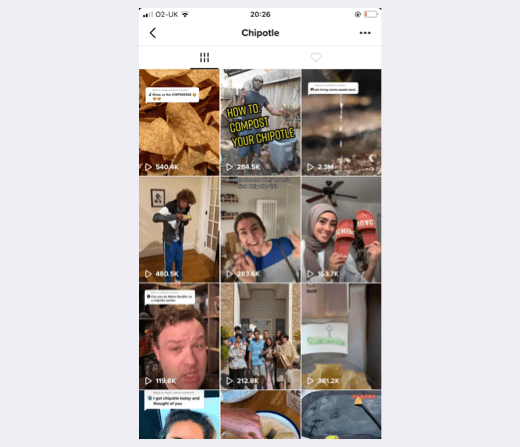
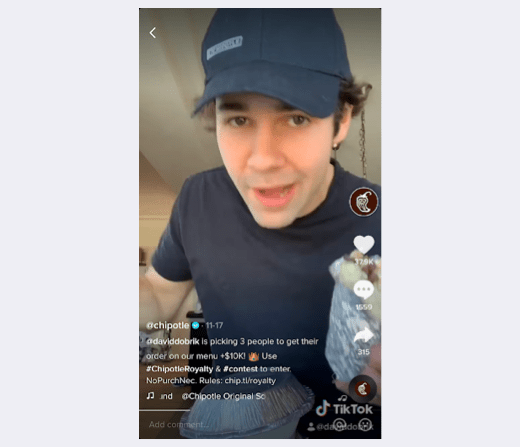
In 2020, Chipotle launched a new “Chipotle Royalty” challenge giving TIkTok users a chance to win $10,000 by proving why their Chipotle order is the best among more than 4 million possible combinations. The campaign calls for videos to be created with the hashtag #ChipotleRoyalty. Chipotle will feature the three winning entries as an official menu item on its app and website for a limited time.
2. Gymshark
Fitness wear brand Gymshark uses ambassadors on TikTok to gain maximum reach. The brand encourages user-generated content from its fans by enlisting their ambassadors to set fitness challenges and dance and fitness routines. This collaborative approach is performing well, as it fits with the communal mindset of Gen Z.
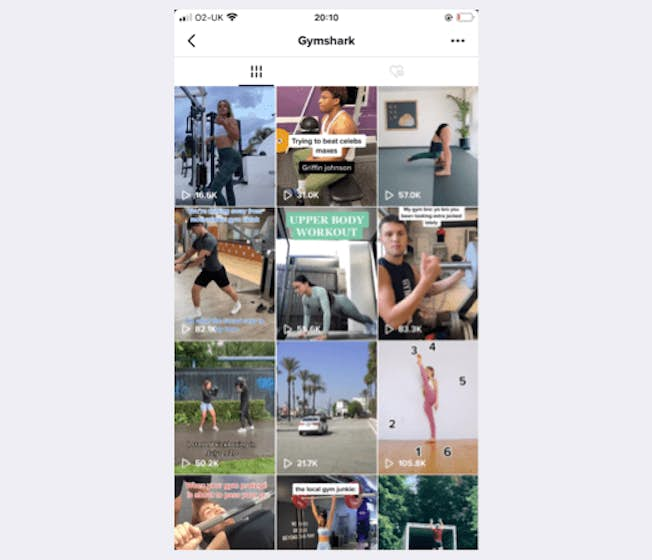
3. Ryanair
The low cost airline has faced its fair share of difficulties due to Covid, but that didn’t stop the brand from creating some excitement on social media. Ryaniair’s TikTok account does not seem a likely one to get tongues wagging, but its funny and quirky videos have attracted a following of 1.2 million.
Speculated to be run by a popular influencer, Ryanair’s TikTok features a series of videos from the cabin crew’s Point Of View (POV). From a baby crying to the crew being too young or a customer not having enough leg room, it pokes fun at itself and resonates with a Gen Z and millennial audience.
4. BBC Education
British broadcaster, the BBC, is using TikTok to directly engage with school-aged audiences through its BBC Bitesize account. Content about exams, revision, and STEM subjects are covered, with young presenters sharing ideas and useful tips.
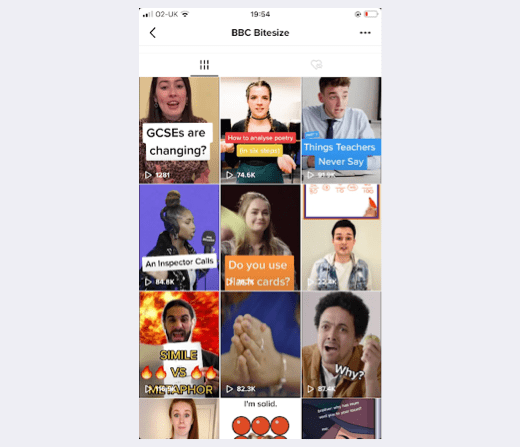
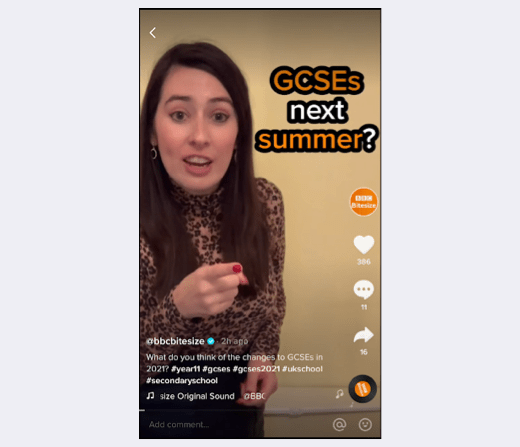
5. Duolingo
The language education app Duolingo has 1.4 million followers and like Ryanair is tapping into the younger generation in its videos. Many of its videos feature its bird logo mascot in the office saying and doing hilarious things. It also uses trends to show it has its finger on the pulse such as the POV craze across TikTok. It’s a great example of a brand that’s capitalizing on organic content that surprises and entertains.
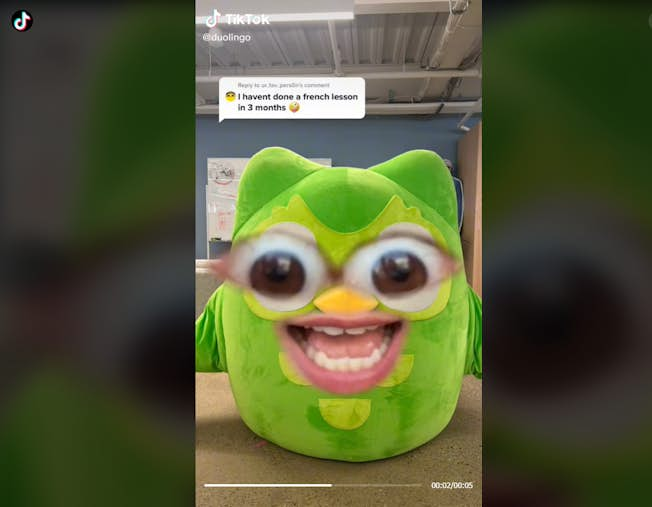
6. The World Health Organization
The World Health Organization (WHO) launched a TikTok channel in the early days of the COVID-19 pandemic to share information and trustworthy health information, offer tips on staying safe, and to debunk myths that were spreading via social media.
The WHO also uses TikTok to share videos which provide critical health updates, enabling it to connect with the app's younger audience base, and it makes the most of TikTok live videos to answer questions from the community.
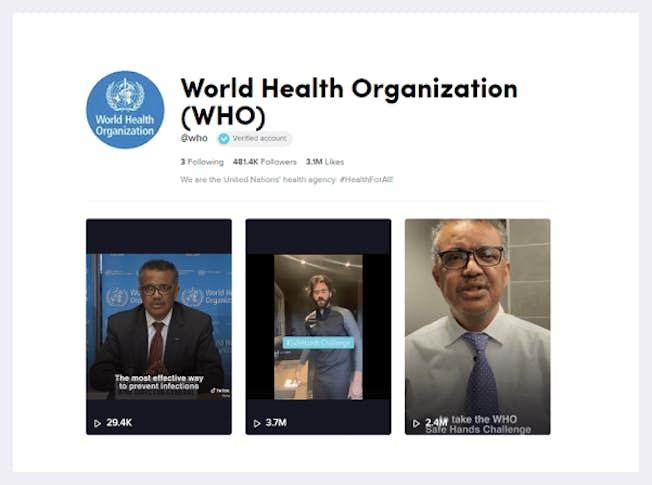
7. Trojan
You might have thought it would be difficult to sell condoms on social media. Not for Trojan on TikTok! Their account features hilarious how-to videos to help choose the right size condom or tapping into Halloween with a video featuring pumpkins and the tagline ‘Pumpkins come in all shapes and sizes’. Its tongue and cheek humor is entertaining TikTok users with over half a million followers.

What's Next for TikTok in 2022 and Beyond
2022 is set to be an interesting year for TikTok. It’s predicted that the app will attract over one billion users over the course of the year, and could potentially attract 1.2 billion according to AppAnnie.
TikTok and Shopping
We will also see moves that will accelerate social commerce within the app. TikTok recently announced a partnership with leading ecommerce platform Shopify and a pilot is currently available to sellers in the UK and US. According to reports, the collaboration will facilitate Shopify merchants’ reach on TikTok and help them boost sales. Analysts say the purchase process will also be streamlined on TikTok and consumers will also be able to carry out in-app shopping.
Longer Videos
TikTok is reportedly working on an option for creators to film much longer videos, of up to three minutes, so we are set to see even more creativity from the platform. There will be many more examples of brands approaching TikTok to reach new audiences, from setting collaborative and creative challenges to utilizing the creative influencers thriving on the platform.
Become an In-Demand Social Media & TikTok Expert
The success of video as a content format across social media makes it a powerful tool to connect with prospects and customers. DMI’s certified Social Media and Marketing course will help you understand the intricacies of platforms such as TikTok, YouTube and Facebook to grow and engage your audience. You will also learn how to conduct social research and devise a cohesive digital marketing strategy across channels.
First published December 2020, updated 2022
Related
Upgrade to Power Membership to continue
your access to thousands of articles, toolkits, podcasts, lessons and much much more.
Become a Power Member- Login
- View Courses
- - - -
- Courses
- Resources
- - - -
- My Account
- Change Password
- Logout





